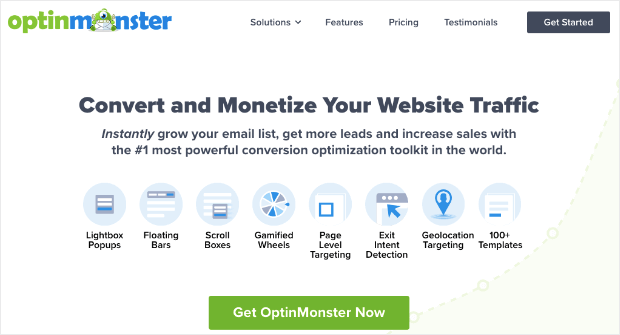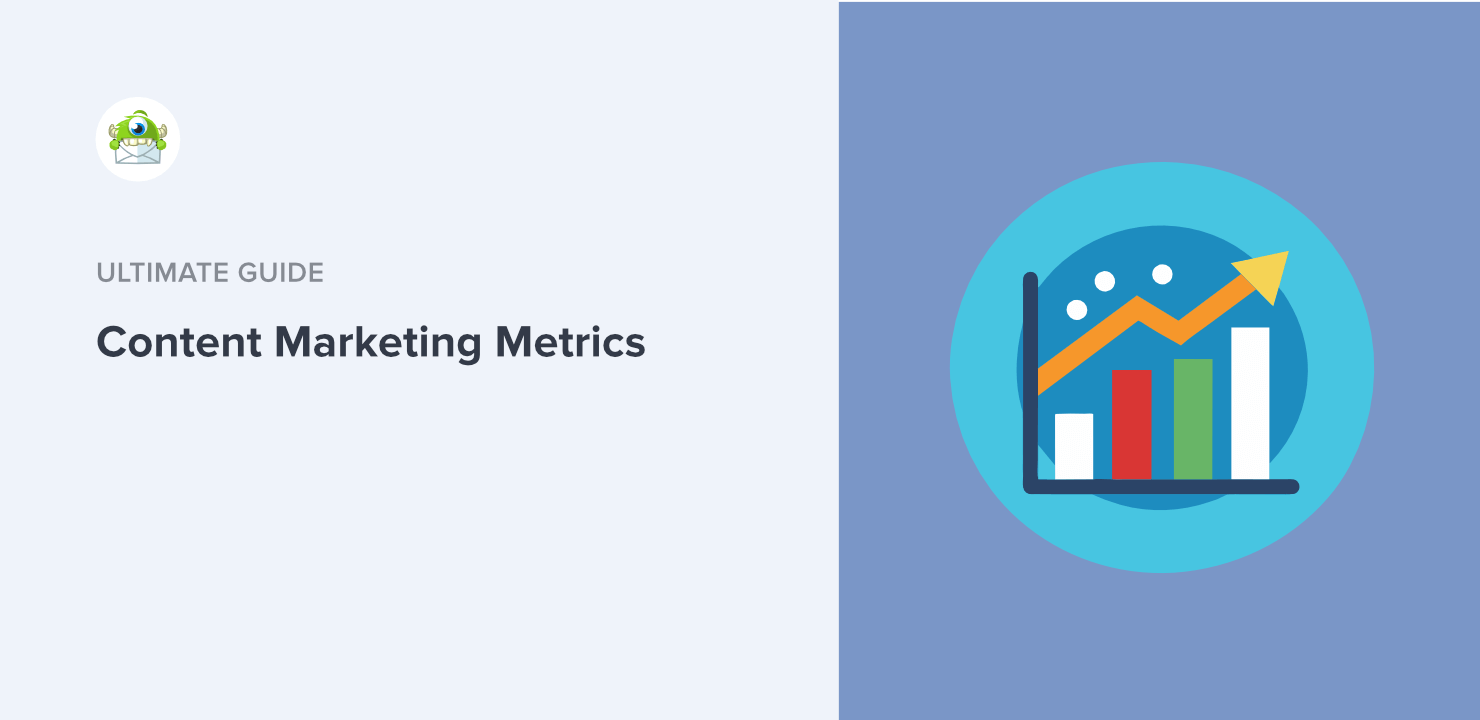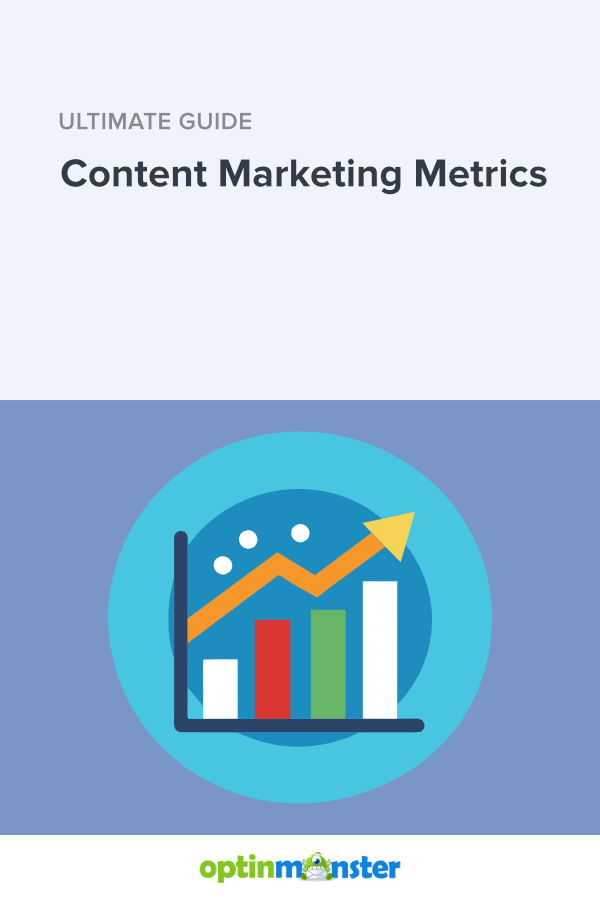TL;DR:
Top 7 Content Marketing Metrics to Track Quickly
- Organic clicks (GSC)
- Conversions (GA4/CRM)
- Conversion rate
- Assisted conversions
- Customer acquisition cost (CAC)
- Lifetime value to CAC ratio (LTV:CAC)
- Engaged sessions (GA4)
When to Use Which Metrics
- Awareness: clicks, impressions
- Consideration: engaged sessions, scroll depth
- Conversion: events, conversions, assisted conversions
- Retention: email metrics, repeat purchase rate
Measuring the impact of your content sounds simple — but it’s where most teams stumble. Maybe you’re reporting traffic spikes without showing business results. Or maybe leadership keeps asking, “So what’s the ROI of all this blogging?”
That’s why tracking the right metrics matters. In this guide, you’ll not only get the full list of 15 proven content marketing metrics but also learn how to connect them to revenue, using tools you already have.
Recommended Resource Need to jumpstart your content marketing results? Get more traffic and conversions with our Ultimate Guide to Content Marketing.
What Are Content Marketing Metrics?
Content marketing metrics are key performance indicators (KPIs) used to evaluate the effectiveness of content marketing strategy.
These metrics help understand how well the content is performing in terms of engaging the audience, lead generation, driving traffic, and increasing conversion rate.
There are different metrics that businesses use to measure the success of their marketing campaigns. The key metrics that a business should focus on depend on its content marketing goals.
For instance, if a business is focused on increasing website traffic, organic search traffic is a key metric to monitor.
In contrast, if a business prioritizes lead generation over traffic, the key metric to focus on would be conversion rate.
Metrics by Funnel Stage
| Funnel Stage | Primary Metrics | Secondary Metrics | Where to Find It | OptinMonster Play |
|---|---|---|---|---|
| Awareness | Impressions, Organic Clicks | CTR, Share of Voice | Google Search Console (Performance → Queries/Pages) | Grow your email list with slide-in forms on top posts |
| Consideration | Engaged Sessions, Avg. Engagement Time, Scroll Depth | Video Watch Time, Pages per Session | GA4 (Engagement → Pages & Screens) | Capture leads with content upgrades + inline opt-ins |
| Conversion | Conversions, Conversion Rate, Assisted Conversions | Time to Purchase, Form Abandonment Rate | GA4 (Conversions → Events), CRM Reports | Reduce drop-offs with exit-intent popups and A/B tests |
| Retention | Email Open Rate, Click Rate, Repeat Purchase Rate | List Growth, Deliverability, Spam Complaints, NPS | ESP dashboards (Mailchimp, HubSpot), CRM | Win-back campaigns using targeted on-site promos |
15 Most Important Content Marketing Metrics
1. Website Traffic (Organic Clicks)
- Definition: The number of visitors who land on your site from organic search.
- Why it matters: Indicates your content’s visibility and how well you’re capturing search demand.
📍 Find it in GA4
- Reports → Acquisition → Traffic acquisition
- Filter by Session default channel = Organic Search
- Review Users, Sessions, Engagement
How to Interpret It
- Rising traffic means strong SEO visibility.
- Flat traffic with high impressions = improve titles & meta for CTR.
Actionable Next Step
- Run headline A/B tests to lift CTR.
- Use OptinMonster slide-ins on top organic pages to convert traffic into leads.
2. Impressions
- Definition: How many times your content appears in Google search results.
- Why it matters: Reflects search visibility, even if no clicks.
📍 Find it in GA4/GSC
- Reports → Acquisition → Traffic acquisition
- Connect Search Console → Queries/Pages
- Compare Impressions vs Clicks
How to Interpret It
- High impressions + low clicks = ranking but poor titles/CTAs.
- Rising impressions = broader reach, often a sign of authority growth.
Actionable Next Step
- Rewrite titles/meta to align with search intent.
- Add FAQ schema to boost SERP visibility.
3. Click-Through Rate (CTR)
- Definition: % of impressions that become clicks. Formula = Clicks ÷ Impressions.
- Why it matters: Shows how compelling your search listing is.
📍 Find it in GA4/GSC
- Reports → Acquisition → Traffic acquisition
- GSC → Performance → Queries
- Review CTR at query + page level
How to Interpret It
- CTR below 2% is weak for branded queries.
- CTR depends heavily on ranking position — don’t compare page 1 vs page 3.
Actionable Next Step
- Test title tags with power words.
- Add star ratings or structured data to boost visibility.
4. Engaged Sessions (Replaces Bounce Rate)
- Definition: Sessions lasting ≥10s, with ≥2 pageviews or a conversion.
- Why it matters: GA4 bounce rate = inverse of engagement. Track engagement instead.
📍 Find it in GA4
- Reports → Engagement → Pages and screens
- Review Engaged sessions, Engagement rate
- Compare to GA4 bounce rate (inverse)
How to Interpret It
- Engagement rate of ~55–65% is healthy for blogs.
- Low engagement on tools/FAQs may be fine if they convert.
Actionable Next Step
- Add sticky CTAs to pages with short sessions.
- Use scroll-triggered popups for mid-content offers.
5. Average Engagement Time per Session
- Definition: Average time users actively spend on site.
- Why it matters: Shows depth of attention, not just presence.
📍 Find it in GA4
- Reports → Engagement → Pages and screens
- Check Avg. engagement time
- Compare across top content types
How to Interpret It
- High time = sticky content.
- Low time = check readability, load speed, CTA placement.
Actionable Next Step
- Break text with visuals or videos.
- Use content upgrades mid-article to hold readers.
6. Scroll Depth
- Definition: How far users scroll down a page.
- Why it matters: Reveals if readers consume the whole story.
📍 Find it in GA4
- Reports → Engagement → Events
- Look for scroll event (default = 90%)
- Add custom thresholds (25%, 50%, 75%)
How to Interpret It
- Drop-off before 50% = weak hook.
- Drop-off at 75% = CTA too far down.
Actionable Next Step
- Move inline forms or CTAs higher.
- Add jump links / TOC for easier navigation.
7. Conversions
- Definition: A completed desired action — form submission, demo request, download, or purchase.
- Formula:
Conversions = Total number of completed GA4 conversion events - Why it matters: This is the clearest line between content and ROI.
📍 Find it in GA4
- Reports → Engagement → Conversions
- Review all tracked conversion events (signups, purchases, etc.)
- Segment by page or traffic source
How to Interpret It
- Benchmarks:
- Lead magnets: 10–30%
- Landing pages: 2–5%
- E-commerce checkout: 1–3%
- Conversion dip may not be content’s fault — could be UX, offer, or page speed.
Actionable Next Step
- Ensure events are configured correctly (GA4 doesn’t auto-track conversions).
- Add inline CTAs in long-form content.
- Use OptinMonster multi-step forms to ease signups.
8. Conversion Rate (CVR)
- Definition: The % of users who take the desired action.
- Formula:
Conversion Rate = Conversions ÷ Visitors × 100 - Why it matters: Shows how efficiently content turns traffic into business results.
📍 Find it in GA4
- Reports → Engagement → Conversions
- Add custom metric: Conversions ÷ Users
- Compare CVR by page type + channel
How to Interpret It
- Benchmarks:
- SaaS free trial pages: 5–7%
- B2B lead forms: 2–4%
- E-commerce product pages: 1–3%
- Pitfall: Don’t lump all traffic together — compare by intent stage.
Actionable Next Step
- A/B test CTA placement, copy, and form length.
- Use exit-intent popups to rescue abandoning visitors.
- Personalize offers by traffic source (e.g., organic vs paid).
9. Assisted Conversions
- Definition: Conversions where your content helped influence the user before the final action.
- Formula: Reported in GA4 attribution models (no single formula).
- Why it matters: Without this, TOFU/MOFU content looks undervalued.
📍 Find it in GA4
- Advertising → Attribution → Conversion paths
- Review assisted conversions + time lag
- Compare first-touch vs last-touch
How to Interpret It
- Benchmarks: 40–60% of B2B conversions are assisted (multi-touch).
- High assisted = strong educational content.
- Pitfall: Only tracking last-click hides content’s real value.
Actionable Next Step
- Build comparison guides, case studies, and FAQs to support mid-funnel buyers.
- Retarget assisted visitors with nurture flows.
- Highlight these numbers internally to defend content budgets.
10. Customer Acquisition Cost (CAC)
- Definition: The average spend required to acquire one new customer.
- Formula:
CAC = Total Sales + Marketing Spend ÷ New Customers Acquired - Why it matters: Keeps acquisition scalable and ROI-positive.
📍 Find it in GA4
- Advertising → Performance → Cost analysis (if Ads linked)
- Import ad spend via BigQuery or GA4 Ads integration
- Divide spend by total conversions
How to Interpret It
- Benchmarks:
- SaaS: CAC payback under 12 months is healthy.
- E-commerce: CAC ideally < Avg. Order Value.
- Pitfall: Ignoring hidden costs (staff time, tools, agency fees).
Actionable Next Step
- Use content SEO to lower CAC (organic scale).
- Retarget high-intent audiences to squeeze more from spend.
- Optimize onboarding flows to shorten CAC payback period.
11. Customer Lifetime Value (LTV)
- Definition: The projected total revenue from a customer over their lifecycle.
- Formula:
LTV = Avg. Order Value × Purchase Frequency × Customer Lifespan - Why it matters: Shows the true value of a customer vs what you spend to get them.
📍 Find it in GA4
- Explore → User Lifetime report
- Segment by channel and campaign
- Compare LTV vs CAC
How to Interpret It
- Benchmarks:
- SaaS: LTV should be 3–5× CAC
- E-commerce: 2–3× CAC
- Pitfall: Averages hide VIP segments — don’t treat all customers as equal.
Actionable Next Step
- Use upsell/cross-sell offers.
- Launch email nurture campaigns to extend lifespan.
- Deploy loyalty popups to encourage repeat purchases.
12. LTV:CAC Ratio
- Definition: The ratio of lifetime value to acquisition cost.
- Formula:
LTV:CAC = LTV ÷ CAC - Why it matters: Balances growth with profitability.
📍 Find it in GA4
- Combine LTV (User Lifetime report) with CAC (Cost analysis)
- Calculate LTV ÷ CAC
- Review by channel or campaign
How to Interpret It
- Benchmarks: 3:1 = sustainable growth; <2:1 = unprofitable; >5:1 = under-investing in growth.
- Pitfall: Looking at blended averages can hide that some channels are losers while others are winners.
Actionable Next Step
- Double down on channels with healthy ratios.
- Reallocate spend from channels where LTV:CAC <2:1.
- Use content remarketing to stretch LTV on expensive-acquisition customers.
13. Email Engagement Metrics
- Definition: Measures how subscribers interact with your email content (open rate, click-through rate, unsubscribes, complaint rate).
- Formula:
- Open Rate = Opens ÷ Delivered × 100
- CTR = Unique Clicks ÷ Delivered × 100
- Why it matters: Email drives retention ROI — it’s cheaper to re-engage existing subscribers than to acquire new ones.
📍 Find it in GA4/ESP
- GA4: Reports → Acquisition → User acquisition (if ESP integrated)
- ESP (Mailchimp, HubSpot, Klaviyo): Campaign reports → Opens/Clicks
- Pair with GA4 Retention to see cross-channel impact
How to Interpret It
- Benchmarks: 20–30% open rate is typical; 2–5% CTR is solid.
- Beware: Apple Mail Privacy Protection (MPP) inflates open rates.
- Track trends over time instead of obsessing on absolutes.
Actionable Next Step
- Test subject lines + send times.
- Use segmented popups (e.g., based on on-site behavior) to capture targeted leads that click more often.
- Build win-back email sequences for disengaged users.
14. Social Engagement Metrics
- Definition: Tracks how users interact with your social content — likes, shares, comments, CTR to site.
- Formula: Engagement Rate = (Likes + Comments + Shares) ÷ Followers × 100
- Why it matters: Expands reach and signals authority, often fueling assisted conversions.
📍 Find it in GA4
- Reports → Acquisition → Traffic acquisition
- Filter by Session channel = Organic Social
- Compare Engagement + Conversions from social
How to Interpret It
- Benchmarks: LinkedIn 2–6% engagement is healthy; Instagram often 1–3%.
- High on-platform engagement but low CTR = need stronger call-to-click.
- Low engagement = wrong format or audience mismatch.
Actionable Next Step
- Repurpose top-performing blog posts into carousels, reels, or short clips.
- Use social-exclusive discounts via popups to convert traffic.
- Add UTM parameters to track campaign performance across platforms.
15. Repeat Purchase Rate (RPR)
- Definition: The percentage of customers who make more than one purchase in a given period.
- Formula: Repeat Customers ÷ Total Customers × 100
- Why it matters: Retention and repeat revenue drive profitability — it’s 5–7× cheaper to keep a customer than acquire a new one.
📍 Find it in GA4
- Reports → Retention
- Review Returning users + purchase events
- Segment by acquisition channel to find high-value traffic sources
How to Interpret It
- Benchmarks: E-commerce ~20–30% repeat rate; SaaS often higher due to subscriptions.
- A declining RPR signals churn or weak nurture campaigns.
- Don’t just track — compare by channel to see which campaigns bring stickier customers.
Actionable Next Step
- Launch loyalty or referral programs.
- Trigger win-back campaigns after X days of inactivity.
- Use OptinMonster personalized upsell offers on thank-you pages.
Maximize Your Content Marketing Impact with OptinMonster
As we’ve explored throughout this blog, understanding and tracking the right content marketing metrics is essential for evaluating the success of your content marketing strategy.
However, having the right tools at your disposal can significantly affect how effectively you can implement and benefit from these strategies. This is where OptinMonster comes into play.

OptinMonster is a powerful conversion optimization toolkit that can advance your content marketing efforts. With its user-friendly interface and a wide array of features, OptinMonster helps you create engaging, high-converting opt-in forms, pop-ups, and other types of interactive content that capture your audience’s attention and encourage them to take action.
Here are a few ways OptinMonster can complement the key content marketing metrics we’ve discussed:
- Boost Conversion Rates: OptinMonster’s targeted campaigns can significantly increase your conversion rates by presenting the right message to the right audience at the right time.
- Enhance Engagement: With features like exit-intent technology, you can engage visitors about to leave your site, turning potential bounces into valuable interactions.
- Improve Lead Generation: OptinMonster’s forms and pop-ups are highly effective for lead generation, helping you grow your email list and nurture leads through personalized content.
- Track Performance: OptinMonster provides detailed insights and analytics, allowing you to track the effectiveness of your campaigns and make data-driven decisions.
- Reduce Cart Abandonment: For e-commerce sites, OptinMonster’s campaigns can help reduce cart abandonment, encouraging customers to complete their purchases.
In conclusion, while tracking the right metrics is crucial for understanding the ROI of your content marketing efforts, leveraging a tool like OptinMonster can significantly amplify your success.
You can meet and exceed your content marketing goals by creating more engaging, targeted, and conversion-focused content. Whether you’re looking to increase brand awareness, drive more traffic, or boost sales, OptinMonster is the perfect partner in your digital marketing journey.
Content Marketing Metrics FAQ
1. What are the most important content marketing metrics?
The top metrics to track include organic clicks, impressions, conversions, conversion rate, assisted conversions, customer acquisition cost (CAC), customer lifetime value (LTV), and engaged sessions in GA4. These cover awareness, consideration, conversion, and retention.
2. How do I measure content that assists but doesn’t convert immediately?
Track Assisted Conversions in GA4’s Attribution reports. They show which content influenced a journey before the final conversion. This helps prove the value of blog posts, guides, and other mid-funnel content.
3. Which GA4 metrics replace time on page and bounce rate?
GA4 uses Engaged Sessions and Average Engagement Time per Session instead. GA4’s bounce rate is now defined as the inverse of engagement (sessions that didn’t last 10 seconds, view 2+ pages, or trigger a conversion).
4. How often should I report on content marketing metrics?
Most teams use a 28-day reporting window for tactical adjustments and a 90-day view for spotting strategic trends. Monthly reporting helps show progress, while quarterly reviews highlight long-term ROI.
5. What content marketing metrics map to each stage of the funnel?
Awareness → clicks, impressions, social engagement
Consideration → engaged sessions, scroll depth, assisted conversions
Conversion → conversions, conversion rate, CAC
Retention → repeat purchase rate, email engagement, LTV
6. What email metrics matter most in 2025?
Prioritize deliverability, spam complaints, click-to-open rate (CTOR), and list growth. Open rate alone is less reliable due to privacy updates like Apple MPP.
7. How do I connect metrics like CAC and LTV to content performance?
Use GA4’s User Lifetime and Cost Analysis reports to calculate LTV:CAC ratios. Then map back to acquisition channels. If organic content drives customers with higher LTV and lower CAC, it proves long-term ROI.












Add a Comment